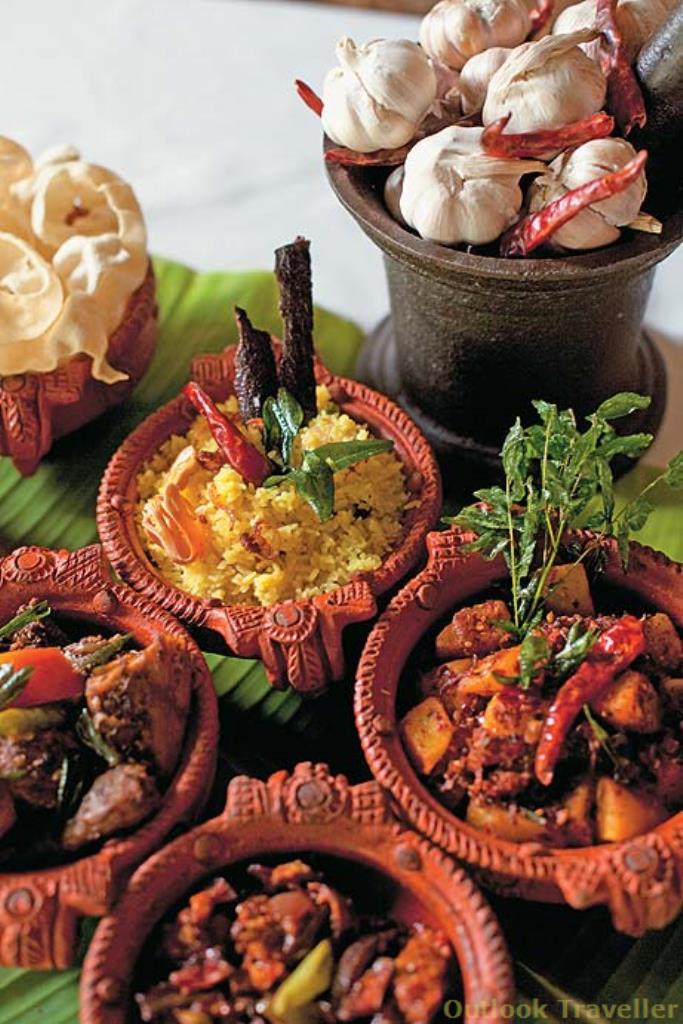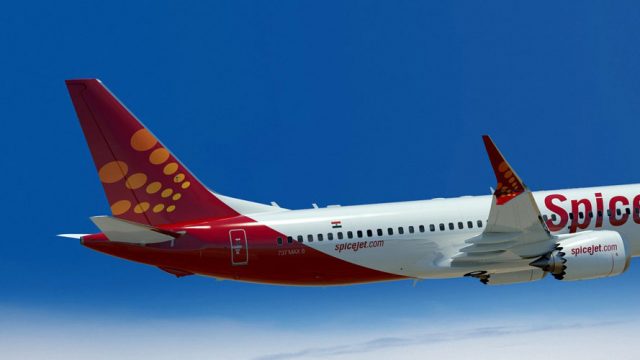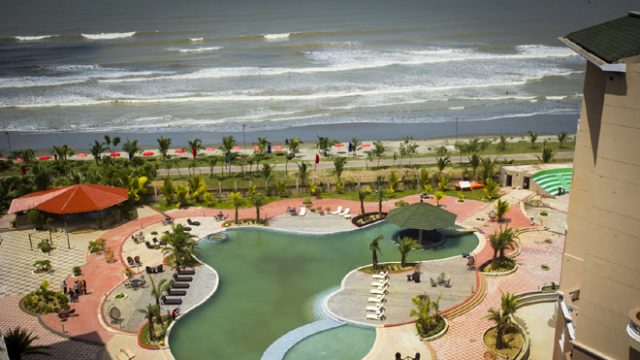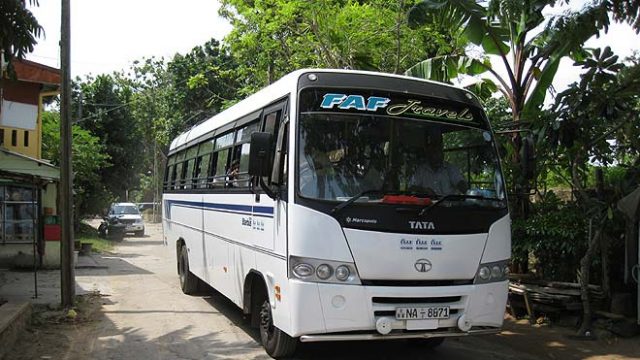As I touched down at the Hazrat Shahjalal Airport, I had to remind myself that
If you are a foodie in Dhaka, there are a few things you have to keep in mind. If you are a vegetarian, you had best opt for continental or Chinese cuisine; traditional Bangladeshi restaurants will enthusiastically serve you shukto and bhaaji and not much else—practically everything else contains meat or fish. The best international restaurants are in Banani and Gulshan 1 and 2, the posh shopping areas of Dhaka, somewhat to the north of the centre of town. The newer ones will serve you pretty authentic dishes, though the older ones, such as Arirang (mainly Korean and Japanese food) and Cathay (Chinese), tend to be somewhat Bengali-ised in their interpretation of standard dishes, i.e. somewhat greasier and spicier than you would expect. Good Thai food is available at Soi 71, and for continental seafood you can’t beat Saltz, on the first floor of the Spitfire restaurant. Gulshan also houses Wasabi, which does authentic Japanese food; visit only if you don’t mind dropping a few thousand taka on a single meal.
My friends enthusiastically recommended Bittersweet, on Road 53 just off Gulshan North Avenue. The first time we went there, late on Saturday evening, we had barely peeked at the menu when we got a phone call saying riots had broken out, as Begum Khaleda Zia had been evicted from her home in the Cantonment Area and had come to Gulshan to stay with her brother. We ran for it (this was at 10pm) and got home to hear that the Bangladesh National Party had called a twelve-hour strike the following day. Undaunted, we squeezed in a visit to Bittersweet on Monday and rewarded ourselves with toasted sandwiches and the sinfully good cookies and cream milkshake. The iced sponge cupcakes were awesome too. The ambience is welcoming without being too glitzy, with lots of comfy sofas and interesting abstract paintings.
Everywhere in Dhaka you will see small, slightly ersatz burger joints where you can fill up very cheaply, at 150 taka or less. There is also the real KFC in Dhaka but check carefully before you enter because many of the local restaurants are clever mimics. Gulshan also has an outlet of Nando’s Chicken, famous for its grilled chicken, on Road 27.
One thing I soon realised was that portions at every kind of restaurant, even the posh ones, tend to be gargantuan and I had to order cautiously so as not to end up sitting in front of a mountain of food. This is difficult because everything on the menus looks so tempting.
Most Dhaka residents I talked to said that the Bangladeshi food sold in restaurants was a pale imitation of what their bua or khala makes in their desher bari or native place, and they earnestly urged me to extend my stay so I could go and sample their cooking. This sense—that the city is somehow provisional and real life, the life of the heart and the stomach, is out there in the countryside—is very pervasive and one gets the feeling that Dhaka is not very comfortable with its city nature. Nevertheless, I insisted that I wanted to know where to go to sample Bangladeshi food in the city.
Gharoa in Motijheel is known for its khichuri. In West Bengal, khichuri is usually vegetarian with a fried fish side-dish, but in Bangladesh it often has meat in it, as nearly everything does. Kasturi in Purana Paltan is justly famed for its iconic Bengali dishes such as chitol maachher kofta. Confusingly, there are other Kasturis around the city, but they are not the Kasturi. I’m told prices per dish range from 200 to 500 taka but the Eid holidays prevented me from finding out for myself.
If you want a taste of real Bengali food and are fairly adventurous, go down to Beauty Boarding near Sadarghat boat terminal. This is reputed to be the place to spot intellectuals, rather like Calcutta’s coffee house, tucking into rice and pabda fish curry. The building where it is housed used to be the stables of a large zamindar-house and has now been converted into an eatery-cum-hotel (though I don’t recommend that you stay there). At Sadarghat, where the long-distance steamers dock, we saw vendors in small boats selling water, fruits and snacks in packets to the steamer passengers. You can, if you come by water, taste Dhaka even before you set foot on it, although most of the boats’ merchandise is rather routine traveller’s rations.
Al Razzaque in Nazira Bazaar is known for its Mughlai food, especially its morog polao. This is like a chicken biryani but with different spices and some variations in the method of making it. Noorani in Chowk Bazaar is known for lassi and nimbu pani. Chowk Bazaar is where the Iftari bazaar sits during Ramzan when the city comes alive after roza. This is where you go to buy special kinds of aachaars and sweets. A speciality of festivals in Dhaka is a kind of sweetmeat called khejuri, which resembles a goja, or fried dough dipped in syrup. Moron Chand Ghosh, originally an iconic sweet shop and now a chain, is famed for mishti doi, or sweet yoghurt, while Nirob is frequented for its speciality bhartas and bhaajis, of which it serves over twenty varieties. The bharta is a comparatively mild steamed or boiled dish that can be made with almost anything: shutki maachh, green banana, okra, even meat and prawns.
There are also a few chains such as Dhansiri, Fakruddin and Star which are famed for their Mughlai-Bengali food. We ventured down the narrow Thatari Bazaar lane that leads to the original Star, cradling our cameras and hopping madly out of the way of rickshaws and thelas: the three-wheeled vehicle is deceptive and just when you think it’s safely past you, the hind wheel runs over your toe. On the way, we stopped to sample doi phuchka, a strange cross between the usual Bengali phuchka or pani puri and the dahi vada. When we finally arrived at Star, we found it had all the ambience we could want from a Mughlai joint—right down to the smoking tandoor up front, the formica tables gleaming under the neon lights and the front desk with its rows of faluda bowls under glass. We sampled their kacchi biryani, which is justly famed, as is their tehari biryani. We then settled our stomachs with a glass of burhani, rather like a lassi but spicier, containing mint, ginger, coriander and other spices and reputed to help digestion (and that we needed). Next up were boti kababs, which were delicately spiced, lightly crisped and absolutely delicious.
If your schedule does not allow you to visit Thatari Bazaar, go instead to one of Star’s many branches around the city, all scrupulously clean and serving the same food from a central kitchen. The biggest such branch is a three-storeyed eatery in Dhanmondi, with a bakery serving pizza and buns on the ground floor and two floors of seating for Mughlai food above. A special feature is their Bengali breakfast of dalpuri, chholaar dal and halwa, which the local people come in droves to eat.
On Nazira Bazaar’s Kazi Alauddin Road, you will find the famous Haji’s Biryani, made by a family who have been in the restaurant business since 1930. The biryani here is light, spicy and non-greasy, but they make only a small quantity every day. The shop opens after Maghrib prayers at sunset and it is all sold out by Isha prayers in the evening. Go early if you are a biryani aficionado: there will be long lines but I am told the wait is worth it.
Interestingly, quite a few biryani restaurants in Thatari Bazaar and elsewhere in the city displayed signs saying “No beef”, and I was told by a friend that Dhaka has a sizeable Hindu population. If you can handle the grease, sample the varieties of paratha on offer from the many small restaurants, including lachhi paratha and the famed ‘chhite paratha’, which is made at small stalls by scattering batter on a hot skillet. Every para tends to have a kabab eatery; these are by and large safe to eat at because trade is rapid and the ingredients fresh. Refuse any salad you’re offered, though. Also remember that many of the smaller stand-alone restaurants tend not to have toilets. However, whatever shortcomings the system might have are more than made up for by the truly amazing warmth of the people. Everywhere I went, people only needed to be asked and I’d receive a flood of advice and reminiscences about food favourites all around the city.
Street food in Dhaka, especially in the old city, is varied, plentiful and interesting. Try to sample the pithés, usually sweet but sometimes-savoury morsels rather like crêpes or dumplings, except they are more often fried rather than steamed. These contain rice powder, coconut and a variety of spices and fillings, such as meat or molasses. Traditionally, pithés were made by the women of a household and eaten as part of agricultural festivals, but they have now drifted loose from their origins in the farm calendar and form a nice contrast to the heavy Mughlai food. You will usually be given a delicious sauce with them. The same goes for the samosa or singara. The Dhaka-ites have perfected a particularly beautiful and crispy way of making the outer covering, and the meat-filled samosa is a speciality. The king of street foods, though, has to be the bakarkhani. These are layered, fried pastry breads that look like crisp lachhi parathas but taste nothing like them. They may have mawa (dried milk), sesame seeds or molasses folded into them and are baked hard. They are salty-sweet, quite heavenly and go equally well with kababs and with mishti doi. You can get them at various small takeaways in Old Dhaka; the locals usually buy them to take home. Panta bhaat or fermented stale rice is another Bengali speciality that you can buy on the street, though be careful as it isn’t cooked after fermenting and is thus easily contaminated. It’s eaten with salt, chillies and lime, and any other spices or side dishes you want to add, and is a popular breakfast dish in summer.
Bangladeshi people in their daily lives take food and hospitality very seriously, and even people whose houses I dropped into for five minutes insisted on giving me tea and a variety of snacks that appeared as if by magic. Dhaka-ites love to feed people and it took lots of dodging to prevent them from stuffing me to the gills every time. They also told me stories about food: the food they eat ‘back home’, the food they make on special occasions, their favourite food and foods I absolutely must try. It really is a rare Bangladeshi, male or female, who cannot give you at least one recipe for a food they like, even if they’ve never cooked.
As my plane rose above the green suburbs of Dhaka, I made a mental promise to myself to come back soon and explore more of the city’s delights, because one trip is just not enough to try out all the curious and wonderful food on offer. I’m sure I shall dream of biryani tonight, with a side order of bakarkhani and sutli kabab and a tall glass of burhani to wash it down.
The Information
Getting around: The best way to get about is by autorickshaws, which operate like taxicabs. Buses are not a very good option for the tourist—they are mostly overcrowded and ramshackle—and taxis are not freely available. That said, if you’re out late, it might be worth incurring the expense of hiring a car for the evening, because the streets are not well lit.
Where to eat: Like most South Asian cities, Old Dhaka has a thriving street culture, of which food is a vital part. The best way to sample it is to go to Old Dhaka either for breakfast or just after sundown; there are specialities that are made only for these times.
Bangladeshi and Mughlai
Al Razzaque Best known for its mughlai chicken polao. Nazira Bazaar; price of a meal 100-250 taka (Re 1= 1.5 taka approx.).
Beauty CabinGood and cheap food. Near Sadarghat boat terminal; price per dish 150-300 taka.
KasturiThe original one is in Old Dhaka; the rest are clones. Purana Paltan; price per dish 200-500 taka.
GharoaKnown for its khichuri. Motijheel, near the Shapla Circle; price per dish 200-350 taka.
NooraniWonderful lassi and nimbu pani. Chowk Bazaar; 30-100 taka.
Moron Chand Ghosh Great mishti doi. Multiple locations; 10-30 taka per sweet; about 40 taka per serving of mishti doi.
NirobSnack-time favourites, bhartas and bhaajis. Haji Selimuddin Road near Dhaka University campus; 100-200 taka.
StarWide choice of Mughlai and Bengali food. Multiple locations; price per dish 250-300 taka.
Haji’s Biryani Famous biryani specialist; get there early and queue patiently. Kazi Alauddin Road, Nazira Bazaar; biryani 200-250 taka.
DhansiriGood food, but best treated as a takeaway. Dhanmondi and Gulshan; price of a meal 200-250 taka.
FakruddinVery fine biryani. Largest branch Gulshan South Avenue; biryani 200-250 taka.
International
BittersweetGreat place for coffee, snacks and cupcakes. Road No 53, off Gulshan North Avenue; price of a meal 300-400 taka.
SaltzBest visited for barbecue food on the ground floor (the restaurant is called Spitfire) and seafood on the first floor. 107 Kemal Ataturk Avenue, Gulshan; price of a meal 500-1,000 taka.
KFCThere are various outlets across the city, but beware of imitations.kfcbd.com
Nando’s Peri Peri ChickenThe spicy chicken here is justly famous. Gulshan and Dhanmondi; 200-300 taka.
Bella Italia Pizza and pasta joint, famed for its thin-crust pizzas. 35 Gulshan South Avenue; price of a meal 350-500 taka.
Asian
SOI71 Serves mainly Thai food of good quality at a reasonable price.soi71.net; price of a meal 500-700 taka.
Arirang Mostly Korean menu, with some Thai and Japanese items thrown in. Good stuff, if a little pricey. Road 51, Gulshan; price of a meal 900-1,100 taka.
Cathay This restaurant will make you nostalgic for Bangla Chinese from the People’s Republic of Tangra. Road 133, House 6 Gulshan; price of a meal 500-700 taka.
Wasabi Experts in Japanese sushi and other dishes. Well worth the bomb you’ll drop here. Road No 71, Gulshan, Dhaka; price of a meal from 2,000 taka.
Top Tip
A word of warning: do not visit during the end of the Haj season when Eid uz Zoha is celebrated. Most workers in the restaurants go home and only the more upmarket establishments will be offering full service. Roads are also clogged by impromptu cattle fairs for sacrifice during the festival.
eating out
food guide
restaurants
Leave a Reply
You must be logged in to post a comment.





